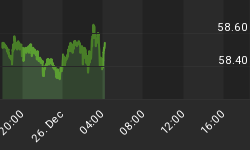Automation is a hot topic in the mining industry, as producers look at ways to increase both productivity and onsite safety.
A recent report, Accessing the Fast and Furious Pace of Autonomy to Transform Mining by Clareo and the World Innovation Network (TWIN) argues that closed and proprietary systems of the major OEMs are a barrier to implementation, and unless something changes, achieving a fully autonomous mine will remain a distant vision.
Lead authors Peter Bryant and Satish Rao say that the industry must shift to a solution that is based on an open and interoperable standard and provides seamless interoperability across OEMs and equipment types.
The paper explores the current state of autonomy in mining and finds more that it acts more as an impediment to a fully autonomous mine and limits ability to gain advantage from technology advances and economics occurring in the broader ecosystem.
“Although mining was an early adopter of autonomy, along with defense, today only about 3% of all mobile equipment is truly autonomous, most of which is haulage,” said Bryant, managing partner at Clareo.
Clareo works with clients on the company level to design and activate innovation strategy and approaches and then dives into specific challenges, Bryant said.
Its client roster includes majors like Anglo American, BHP and Goldcorp. All together, Clareo lives at the intersection of mining and other industries. Related: The True Cost Of Opportunity In America
“Autonomy is one of those challenges we’ve spent a reasonable amount of time over the past 18 months, examining what’s happening in the mining industry and the broader autonomy ecosystem,” Bryant told MINING.COM.
“I don’t think any of the major OEMs have the economic interest in moving from the current system, as many of them are really expensive and trying to recoup what have been high development costs, albeit on what are essentially closed and proprietary systems,” Bryant said. “Now they’re just protecting their legacy positions. As we describe in the paper we have seen this movie before in other sectors.”
For majors like BHP, Rio Tinto, Anglo American and others, fully autonomous mines unlock tremendous value, the paper maintains.
Bryant said that once an entire mobile fleet is autonomous, the possibility exists to reimagine the design of the physical mine that would allow for higher recovery rates and open up resources that are currently not economical or technically not feasible to mine.
He cited the example of a container terminal at Long Beach, which is the largest container port in the US, that is fully autonomous (and electrified).
Bryant said Its automation has allowed for a heavier concentration of activity in a given space – and higher rates of productivity.
“In my opinion, it’s an urgent issue. If miners want to remain competitive, the industry must change the way it is approaching autonomy, given the rapid pace of innovation within this ecosystem,” Bryant added.
By Mining.com
















